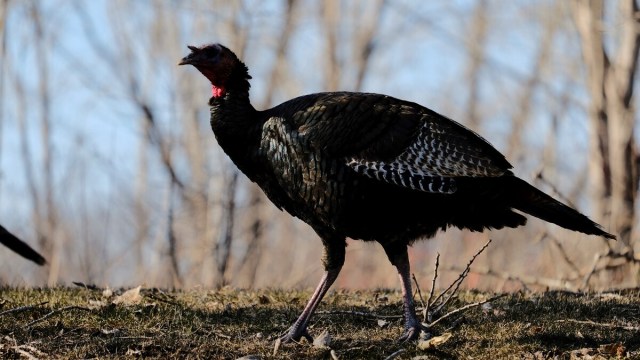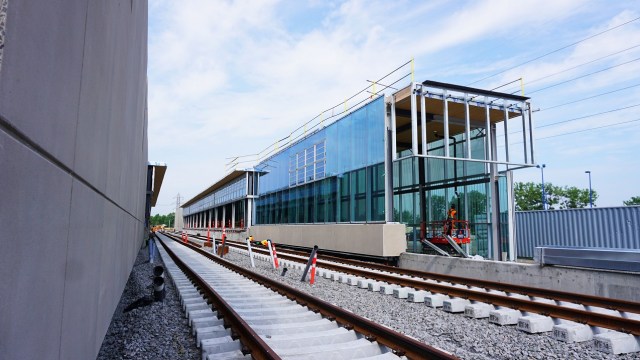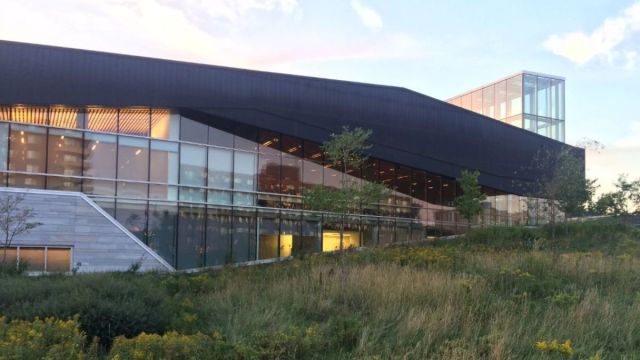Conservationists backed by lawyers to halt Technoparc development

A conservation group opposed to a development in Saint-Laurent’s Technoparc are demanding intervention from the federal and provincial governments and have enlisted legal help.
“Montreal has a moral obligation to protect this land,” said Don Hobus of Sierra Club Quebec, who sent letters to both the federal and provincial ministers of Environment through Colby Monet law firm on Monday.
The wetlands in Saint-Laurent’s Technoparc, where the Eco-Campus Hubert Reeves is slated for construction, are home to about 90 nesting bird species.
As part of the development project, 10 hectares of green space—including a marsh—will be protected and ceded to the City of Montreal. It will become part of the future parc-nature des Sources, a project Saint-Laurent mayor Alan DeSousa hopes can ultimately protect 38 to 48 hectares of natural space.
“At the present time, no land is protected and my objective was to make sure that we can protect the maximum number of areas that had biological value,” said DeSousa.
Director of communications for Technoparc, Carl Baillargeon, confirmed that, as part of the development project, the Technoparc agreed in 2013 to protect 10 hectares of green space and later donate them to the city.
Work on an extension of Alfred-Nobel Blvd. and a levee to maintain the water levels in the wetlands that will also serve as a walkway is set to start this month and be completed by February. The first building of five on the Eco-Campus Hubert Reeves development is set for construction in spring 2017.
Biodiversity
The letters sent on behalf of the Sierra Club maintain that environmental studies performed on the marshes at the Technoparc are outdated—from 2001 and 2011—and do not examine the biodiversity of the area. They also state that the development will threaten the habitat of the endangered Least Bittern, a small species of heron that has been sighted at the marsh adjacent to the Technoparc, owned federally and leased to Aeroports de Montreal.
“Environmental action is in a sore state in Quebec, where citizens have to do what the government hasn’t,” said lawyer Ricardo Hrtschan.
Mayor DeSousa, who was cc’d on the letters, responded saying he would wait to hear from the ministers, but disagreed with some of the content, specifically to accusations that water levels in the marshes have been affected by the City of Montreal and Technoparc’s interventions.
“There has been no work done to even deviate or drain one drop of water by the City of Montreal or the Technoparc with regard to the marshlands,” said DeSousa.
The Quebec ministry of Environment confirmed that they received a demand letter and are in the process of analyzing the situation. They could not comment further at this time.
Environment and Climate Change Canada (ECCC) confirmed that Environment Minister Catherine McKenna received Sierra Club’s letter.“The Minister takes matters like these very seriously,” media relations manager Jonathan Fillion told TC Media in and email.
“ECCC will initiate a discussion with the Montreal Airport about the Species at Risk Act (SARA) and migratory bird protection and will collaborate with stakeholders and jurisdictions seeking advice on the potential impacts of development projects in the area.”
Roughly 150 people turned out at the Technoparc on Sunday in solidarity against the Eco-Campus Hubert Reeves development.
Green tech
“There is a big need in North America for nano-tech and clean tech companies for research and development,” said Baillargeon. “The eco campus is an ecosystem that’s integrated with the more progressive buildings that we don’t see in industrial parks nowadays.”
In July, the Technoparc delayed construction by two weeks, from mid-august to the beginning of September, in order to not disturb nesting birds. A biologist will be consulted in every step of the project, Baillargeon explained, and the industrial park has hired Groupe Hémisphères, an environmental advisory firm, to survey the terrain.
Baillargeon said the group confirmed that between 80 and 90 nesting bird species are found in the area.
This story was updated on Sept. 03 to include ECCC’s response.





